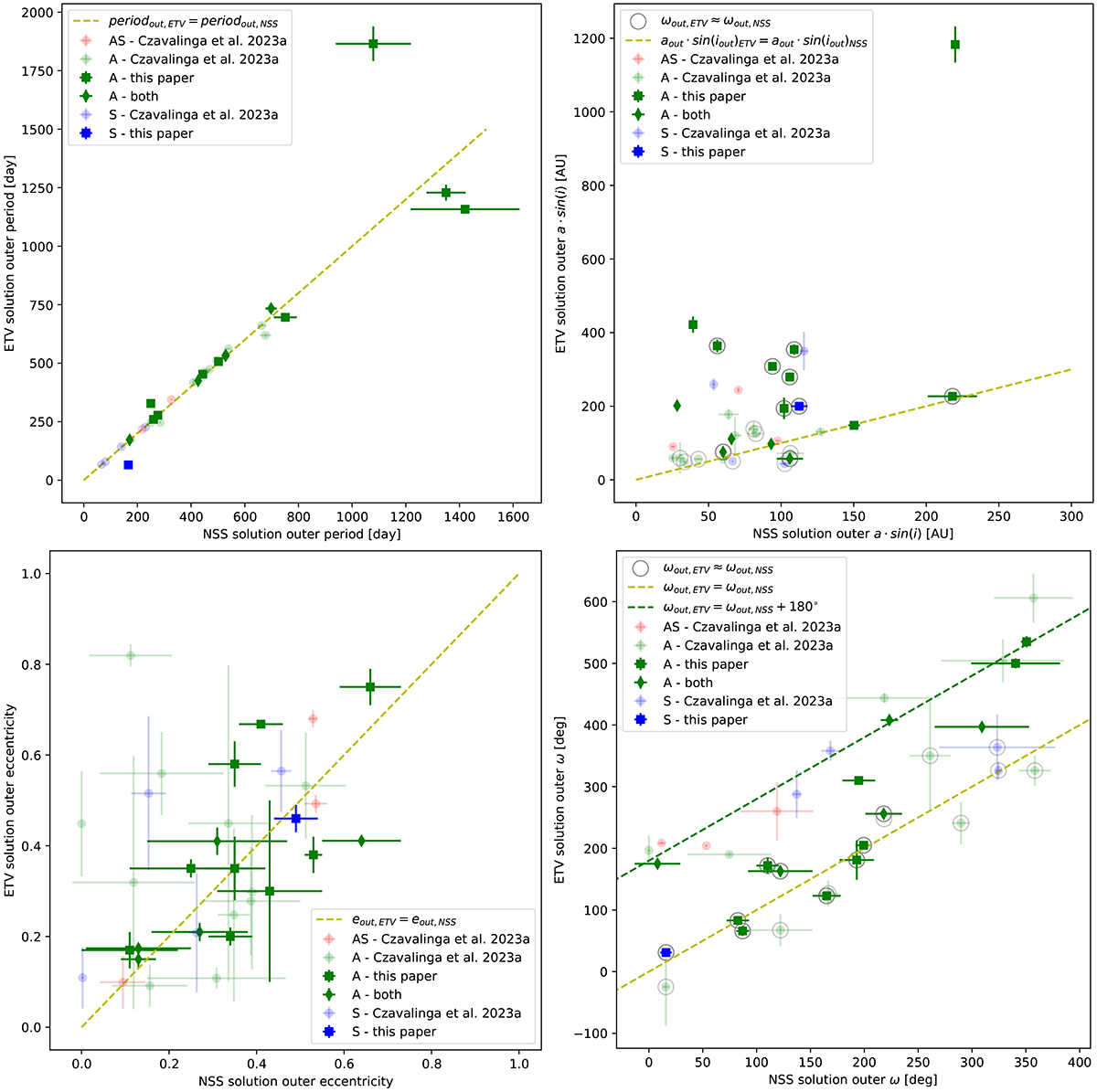Fig. 12.

Download original image
Correlations between the orbital periods (upper left panel), projected semimajor axes (upper right panel), eccentricities (lower left panel), and arguments of periastron (lower right panel) from the Gaia NSS solutions and fitting LTTE models to the TESS ETVs of the NCVZ sample. Different colors show different types of Gaia NSS orbital solutions. The dashed yellow lines represent a ratio of unity, and in the bottom right panel, the dashed green line shows the ±180° difference between the arguments of periastron from the two types of solutions. In order to avoid breaking the dashed lines in the bottom right panel, we employed a ±360° shift for some of the ωout, NSS values, which is equivalent because of the periodicity of the argument of periastron. The faded dots are additional previously known systems from Czavalinga et al. (2023).
Current usage metrics show cumulative count of Article Views (full-text article views including HTML views, PDF and ePub downloads, according to the available data) and Abstracts Views on Vision4Press platform.
Data correspond to usage on the plateform after 2015. The current usage metrics is available 48-96 hours after online publication and is updated daily on week days.
Initial download of the metrics may take a while.


